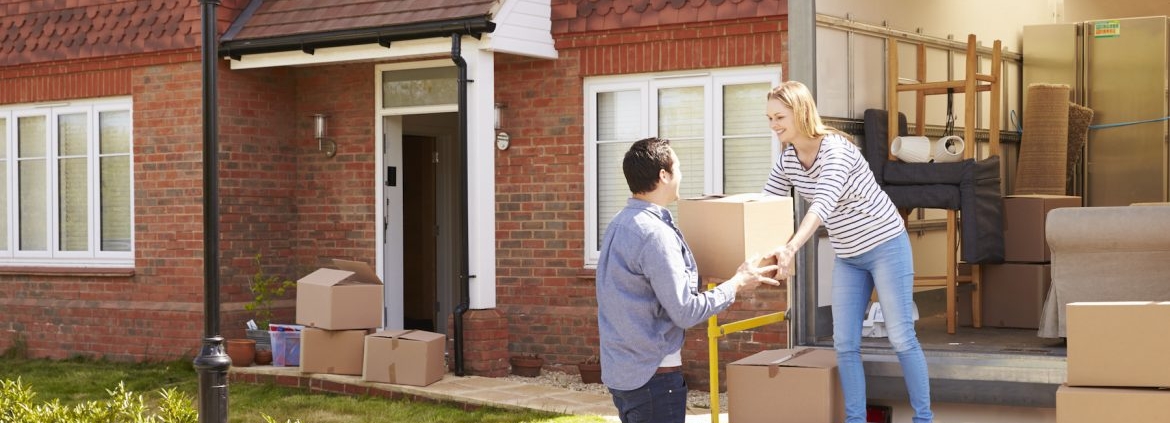5 Tips to Make Moving a Breeze
Everyone will have to move to a different residence at some point in their lives, and Australians aren’t any different: a study found that close to 42% of Australians aged 5 and over moved home between 2006 and 2011. Add to that more recent studies by PCP Market Research on behalf of In-Deed that reveal that 70% respondents felt that moving was so stressful that it accelerated their aging, and relocating one’s earthly possessions to a different place becomes something that causes consequential amounts of anxiety among the people that do so.
If you are in the process of selling your home, moving will be one of the additional costs associated with the sale of a property, and is a noteworthy part of the process that home sellers should keep in mind when they start thinking of selling.
Thankfully, there are some simple ways in which home sellers can make the process of moving less stressful and easier in general. Check out these tips to make moving house a breeze.
1. Fail to plan and plan to fail
Okay, the saying may be a little over-the-top – it is entirely possible to have a fairly successful move (read: everything will probably reach its intended destination) without proper and thorough planning, but not doing careful planning of your move before you do so is a form of self-sabotage that will send your stress levels through the roof.
Because moving is also a relatively costly process, especially if you employ the services of removalists to assist with your relocation, you absolutely need to have a plan of action ready well in advance.
Start by going from room to room and making an inventory of items that will need to be packed and moved. Once you know what needs to go, you’ll be able to relay this information to a removalist service that can quote accordingly. Yes, you can make a rough estimate of items, but chances are that there will be extra boxes that you didn’t disclose on moving day, leading to a higher bill.
You should start planning your move as long before moving day as possible. This will give you a sense of preparedness and because you are not leaving a lot to chance, the likeliness of last-minute upheavals is greatly reduced.
You can make the set-up of your inventory much simpler with the organisational app Sortly. Sortly allows users to categorise items, add photos and warranty details, and even print QR labels to stick onto boxes to make unpacking much easier. This also assures your privacy, as you won’t have to mark boxes with their exact contents.
Another useful online resource that anyone who has to move will appreciate is Floorplanner, a free tool that lets you map out a floor plan of your new residence, making it easier to direct the movers to the exact spots in which furniture should be placed.
2. Make your move a little lighter by getting rid of clutter
Every time we settle down somewhere new, we accumulate more stuff that needs to accompany us when we move house the next time. This causes every move to be a little bigger than the last, contributing to the overall cost of moving, as well as to the stress associated with the process.
When making your inventory of items that need to be moved, make a conscious decision to get rid of everything you don’t need, or aren’t using anymore. Your closet is one place that is almost definitely storing items that you aren’t wearing anymore, and donating clothes that you haven’t worn in the past year or so should already have an influence on the amount of items that make up your moving load. Continue this process through the entire house and separate anything you haven’t used in a long time to be donated to a charity organisation or the like. If you’re a little sentimental, this might be a bit of a challenge, but you’ll thank yourself for lightening the load when you start packing.
The process of decluttering should commence a few weeks before your actual move, so that you still have ample time to drop them off at a charitable organisation. Larger op-shops are good places to consider in this regard, as they will be able to accept a larger amount of items.
3. Find a reliable removalist service
The fact that many people who move decide to undertake the entire process by themselves is probably a huge contributing factor to the stress they experience before, during and after a move. While it is definitely a lot cheaper to commandeer a group of friends to help you when you move, it also requires a large amount of organisation on the person who is moving’s behalf.
Removalists provide a range of options in terms of their service offering, and can tailor a quote to include everything from packing and unpacking, to just transporting specific items. Costs vary widely from company to company, but if you do decide to use a removalist service to help with your move, make sure that it is registered with the Australian Furniture Removers Association (AFRA). To get accreditation from AFRA, companies have to adhere to minimum standards for equipment, training and insurance cover, which should make you feel more comfortable about using their services.
Allowing a removalist service to do all the heavy lifting is not a requirement when you move, but it will most definitely take the weight of a mountain off your shoulders.
4. Sort out your utilities
Often left to the last minute, updating your utilities needn’t be a hassle. Sign up with Powershop, inform them of when your move-in day is, and they will ensure that your power is connected. Scurrying around in the dark to find candles in boxes surely isn’t the ideal way to spend the first night in a new home, but this quick fix also guarantees that you won’t have to spend hours on the phone or getting paperwork together to update your utilities.
5. Pack a separate box for the things you’ll need immediately
When setting up your inventory, make sure to create a separate list of items that you will need easy access to immediately after moving in to your new house. Households have unique needs in this regard, and it is worthwhile to establish these beforehand, but your box of quick access items might include things like toiletries, a kettle, mugs and tea or coffee, phone chargers, eating utensils and plates, trash bags and a box cutter.
If you want to make it even easier to find the items you’ll need first, pack these essentials into a clear plastic bin – that way you’ll be able to quickly distinguish it from the rest, and you’ll also be able to see what is inside.
Conclusion
While moving house can be a stressful endeavour, using these tips when the time comes can go a long way in reducing anxiety levels about your move. To find a real estate agent that can make selling your home just as painless as your imminent move, get in touch with Perfect Agent – we recommend real estate agents based on your specific needs and requirements.




